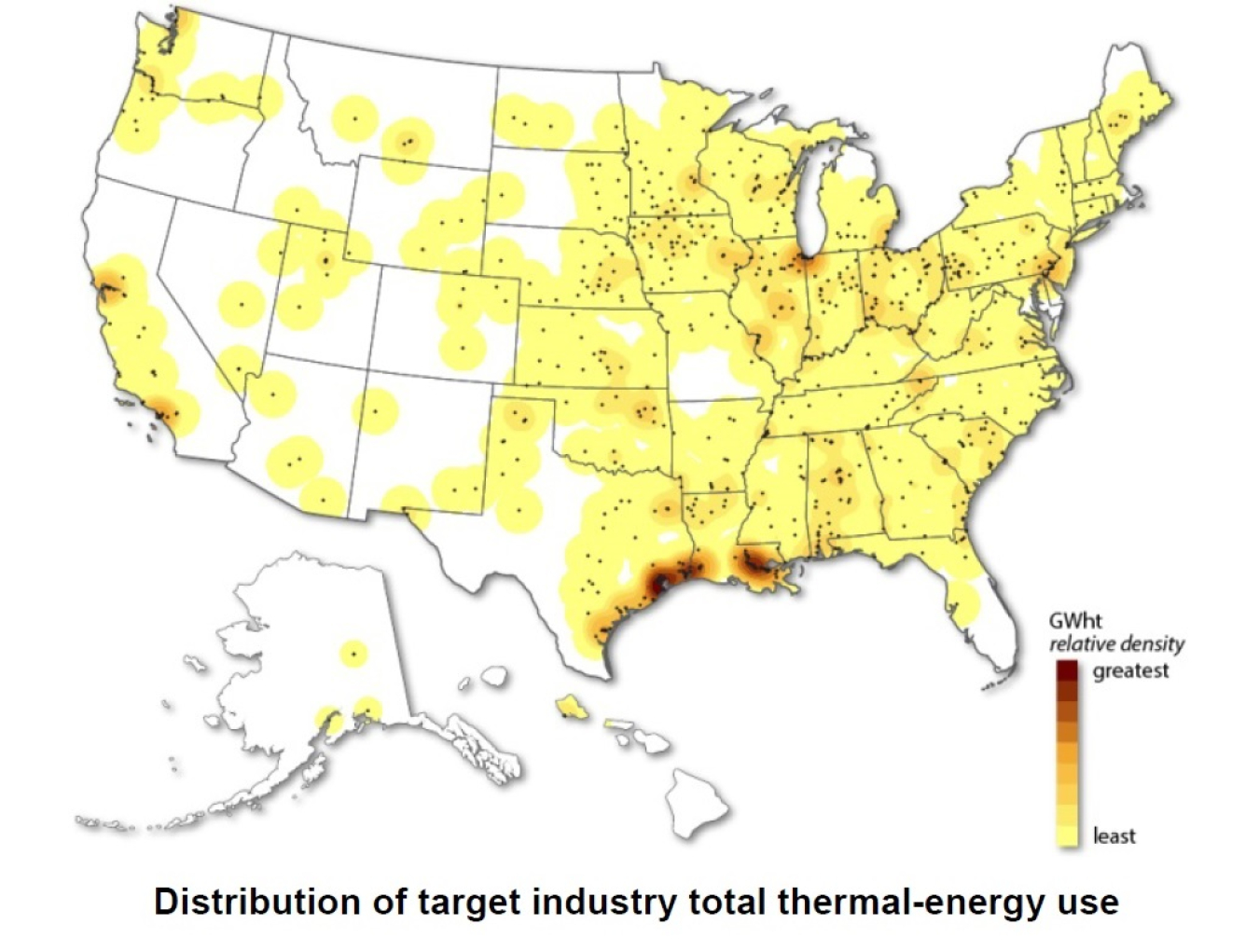This report quantifies greenhouse gas emissions from the industrial sector and identifies opportunities for non-GHG-emitting thermal energy sources.
February 28, 2018Research from the National Renewable Energy Laboratory and Idaho National Laboratory in this report quantifies greenhouse gas (GHG) emissions from the industrial sector and identifies opportunities for non-GHG-emitting thermal energy sources to replace the most significant GHG-emitting U.S. industries based on targeted, process-level analysis of industrial heat requirements. The intent is to provide a basis for projecting opportunities for clean energy use. This report provides a prospectus for small modular nuclear reactors (including nuclear-renewable hybrid energy systems), solar industrial process heat, and geothermal energy.
This report was published by the National Renewable Energy Laboratory’s Joint Institute for Strategic Energy Analysis with research funded by the Strategic Priorities and Impact Analysis Team in the U.S. Department of Energy’s Office of Energy Efficiency and Renewable Energy Office of Strategic Programs.

More Information
The industrial sector was the third-largest source of direct U.S. GHG emissions in 2014 behind electricity generation and transportation and accounted for roughly 20% of total emissions. The Energy Information Administration projects that total U.S. energy consumption will grow to about 108 exajoules (1 EJ = 1018 J) or 102 quads (1 quad = 1015 British thermal units) in 2025, with nearly all of the growth coming from the industrial sector.
Unlike the transportation sector and electrical grid, energy use by industry often involves direct conversion of primary energy sources to thermal and electrical energy at the point of consumption. The heterogeneity and variations in scale of U.S. industry and the complexity of modern industrial firms’ global supply chains are among the sector’s unique challenges to minimizing its GHG emissions. A combination of varied strategies—such as energy efficiency, material efficiency, and switching to low-carbon fuels—can help reduce absolute industrial GHG emissions.
This report provides a complement to process-efficiency improvement to consider how clean energy delivery and use by industry could reduce GHG emissions. Specifically, it considers the possibility of replacing fossil-fuel combustion in industry with nuclear (specifically small modular reactors), solar thermal, and geothermal energy sources. The possibility of applying electrical heating and greater use of hydrogen is also considered, although these opportunities are not discussed in as much detail.
Several technical challenges and opportunities to application of clean energy sources for industrial heat users including the following:
- Quality of heat required by the user (or temperature of the working fluid)
- Industry process heat-transfer modes
- Scale of heat source versus heat user demand, which may be mitigated by selecting the appropriate source or by industrial clustering (viz., an energy park)
- Transport requirements between the heat source and industrial process-unit operations, which involves distance and the materials needed for that transport
- Thermal energy storage needs and options
- Hybrid heat/electricity production
- Electrification of heating processes
- Hydrogen production and use as an intermediate energy source.

